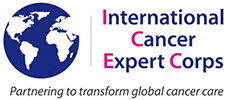A third workshop organized by the European Organization for Nuclear Research (CERN), International Cancer Expert Corps (ICEC) and the Science and Technology Facilities Council.
Burying the Complexity: Re-engineering for the Next Generation of Medical Linear Accelerators for Use in Challenging Environments
Co-organizers:
David Pistenmaa, ICEC; Norm Coleman, ICEC;
Manjit Dosanjh, CERN; Charlotte Jamieson, STFC
This workshop, jointly organized by STFC, the International Cancer Expert Corps (ICEC) and CERN, was funded through the UK’s Global Challenges Research Fund (GCRF). It continued to develop the work that arose from two previous meetings held at CERN in November 2016 and October 2017. Its focus was to hear the outcome of five STFC seed-corn funded projects developed at the October 2017 workshop and further refine the specification for a novel medical linear accelerator radiotherapy machine. Projects included:
• Study of Accelerator Technology Options
• Robust Permanent Magnet Beam Delivery Systems for Medical Radiotherapy Linacs
• RF Power Systems and Optimized RF Structures for Electron Beam Acceleration
• Linear Accelerator Simulations for Stable and Sustainable Operation of Developing Country Radiotherapy Linear Accelerators
• Cloud-based Electronic Infrastructure in Support of Linac-based Radiotherapy in Challenging Environments
At the March 2018 workshop, the work package leaders presented the outcome of their initial studies for review and discussion by the experts in the room. The expertise of the participants had been expanded to include additional accelerator and medical physicists, oncologists, engineers, representation from the UK’s National Physical Laboratory, and additional LMIC participants from Kenya, Nepal and Ukraine. This and the previous two workshops have had involvement also from the IAEA, and LMIC representatives from Botswana, Ghana, Jordan, Nigeria and Tanzania. The LMIC representatives again contributed to the discussions of considerations in their countries to ensure that potential solutions of any future machine addressed in-country needs and challenges.
The participants examined the key parameters of a future machine, identifying specifications that could be fixed, those that had more flexibility and those where further work was needed. Thought was also given to identifying gaps in research to ensure that the whole system is covered, including imaging and treatment planning. There had been significant progress in each of the five areas that successfully moved the project forward and it was apparent from the workshop discussions that there was significant interdependency between parameters and components and that no single modification would have a dramatic impact. It was also recognized that modularity, which would provide cheaper routes to maintenance and repair, was a goal in itself. Each of the five work areas above has received additional support that will enable them to continue their research and to network and take forward ideas generated by the series of workshops. The main goal of the wider collaboration has been identified as refining specifications for a complete radiotherapy treatment system as well as working towards a conceptual design report for a modular medical linac for challenging environments.
Brown, David. “Burying the Complexity: Re-Engineering for the Next Generation of Medical Linear Accelerators for Use in Challenging Environments.” Enlight Highlights, June 2018, enlight.web.cern.ch/.

